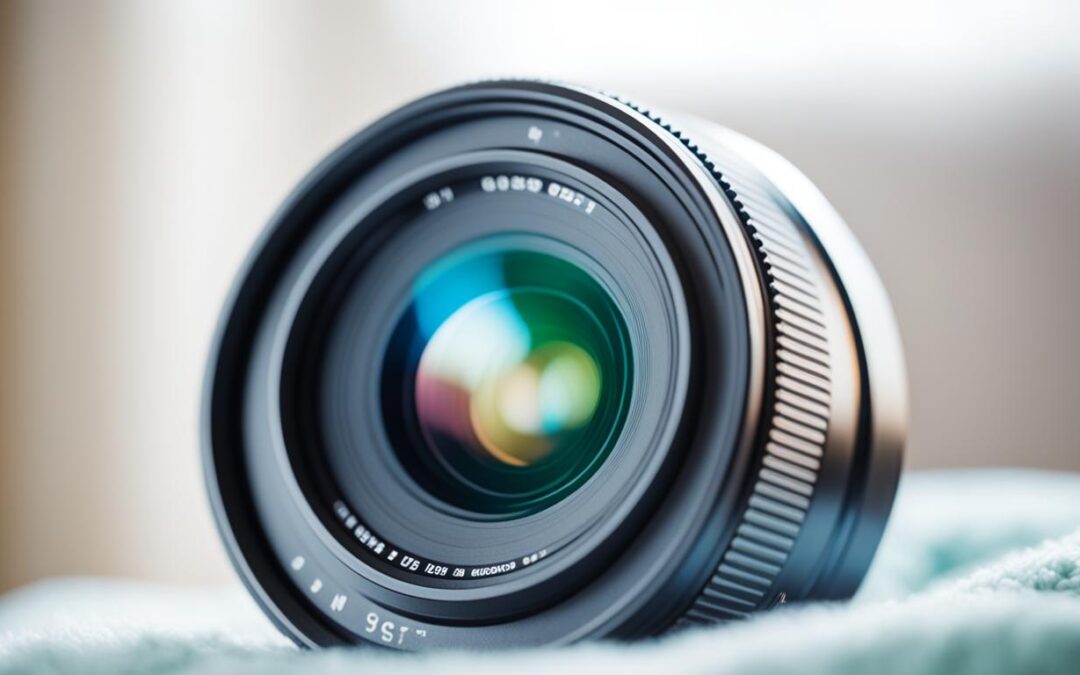Newborn photography is a special subset of photography that requires specific equipment and techniques to capture the perfect moments of a baby’s first days. One of the most crucial pieces of gear for newborn photography is the lens. The right lens can make all the difference in capturing the clarity, detail, and beauty of these precious moments. In this article, I will explore the best lenses for newborn photography, taking into consideration the requirements, preferences, and budget constraints of photographers. Whether you are a beginner or a professional in newborn photography, finding the perfect lens for your needs is essential in creating stunning images of these little miracles.
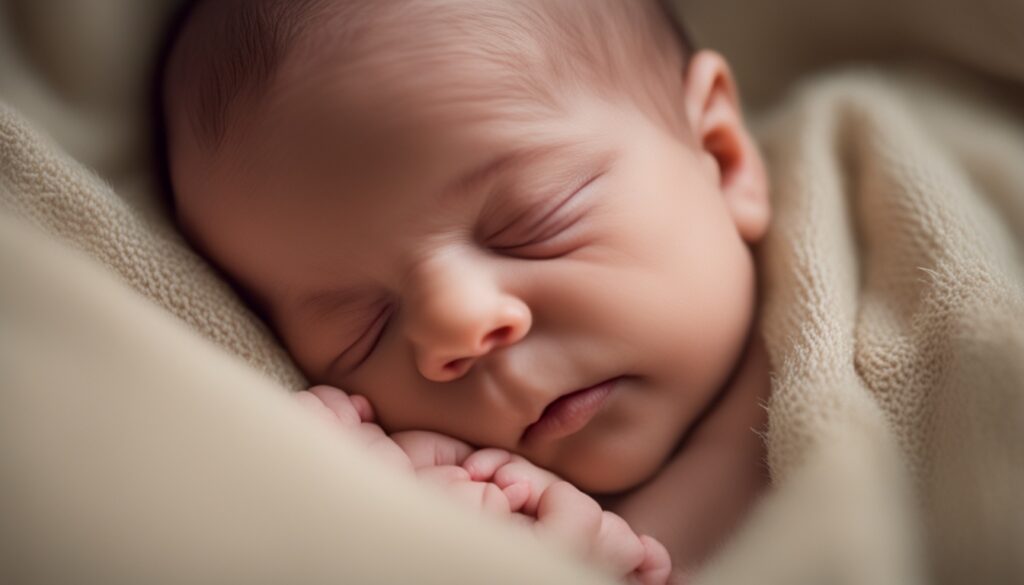
Understanding Newborn Photography Requirements
Before diving into the lens options for newborn photography, it is important to understand the specific requirements of this genre. Newborn photography often takes place in low-light situations, requires capturing delicate details, and emphasizes the use of shallow depth of field to create ethereal images. These requirements necessitate the use of high-quality gear that can handle low-light conditions, provide crisp focus, and offer the versatility to capture both close-up details and wider shots.
The Importance of Gear Quality in Capturing Newborn Moments
When it comes to newborn photography, gear quality plays a crucial role in capturing those precious moments. The right equipment ensures that you can capture the tiny details, the softness of a newborn’s skin, and the loving atmosphere surrounding them. Investing in high-quality gear will result in images that are sharp, clear, and full of beauty.
One of the key requirements for newborn photography gear is the ability to handle low-light conditions. Newborns are often photographed indoors, where lighting can be challenging. Having gear that performs well in low-light situations allows you to capture the delicate features of a newborn without compromising on image quality.
In addition to low-light capabilities, gear quality is also crucial for achieving crisp focus. Newborns are small and fragile, and capturing their details requires precision and accuracy. High-quality gear with advanced autofocus systems ensures that every tiny eyelash, finger, and toe is beautifully captured with sharpness and clarity.
Furthermore, gear quality can impact the versatility of your photography. Newborn sessions often involve capturing close-up details as well as wider shots to showcase the newborn in their environment. Having gear that offers a range of focal lengths and composition options allows you to capture a variety of shots, adding depth and variety to your portfolio.
Mirrorless Revolution: A Preference for Modern Shoots
In recent years, mirrorless cameras have gained popularity among newborn photographers. These modern cameras offer a range of benefits that make them well-suited for capturing newborn moments.
One of the advantages of mirrorless cameras is their compact size. Newborn sessions often take place in small spaces, such as nurseries or homes, where bulky equipment can be cumbersome. Mirrorless cameras, being smaller and lighter than traditional DSLRs, allow for greater flexibility and mobility during the shoot, making it easier to capture those fleeting moments without being intrusive.
Mirrorless cameras also excel in their ability to handle low-light conditions. With their electronic viewfinders, these cameras provide a real-time preview of the exposure, allowing you to make adjustments on the spot and ensure optimal lighting for your newborn images. This feature is particularly beneficial in low-light situations where precise adjustments are necessary to achieve the desired results.
Another key advantage of mirrorless cameras is their silent shooting mode. Newborn sessions require a calm and peaceful environment to keep the baby comfortable and relaxed. The quiet operation of mirrorless cameras helps to minimize distractions and create a peaceful atmosphere, allowing you to capture those intimate moments without disturbing the newborn.
Overall, mirrorless cameras offer a modern and efficient approach to newborn photography. Their compact size, low-light capabilities, and silent shooting mode make them a preferred choice for many photographers in this genre.
Starting Out: The Best Mirrorless Cameras for Newborn Photography
When it comes to mirrorless cameras for newborn photography, Canon offers a range of options to suit different needs and budgets. Let’s explore three popular choices in the Canon lineup that are well-suited for capturing the precious moments of newborns.
Canon R6 Mark II: A Professional Choice for Precision
The Canon R6 Mark II is a top-of-the-line mirrorless camera that is perfect for photographers who demand precision and accuracy in their newborn photography. With its advanced autofocus system and subject tracking capabilities, it excels at capturing fast-moving moments with incredible detail. The R6 Mark II ensures that every little expression, smile, and movement of your newborn is beautifully documented.
Canon RP: Budget-Friendly Without Compromising Quality
If you’re just starting out in newborn photography or looking for an affordable yet capable mirrorless camera, the Canon RP is an excellent choice. It offers impressive image quality, thanks to its full-frame sensor, without breaking the bank. The Canon RP is lightweight and easy to handle, making it a great option for photographers transitioning from entry-level DSLRs.
Canon R50: Compact and Ideal for Traveling Newborn Photographers
For photographers who prioritize portability and need a camera that can keep up with their on-the-go lifestyle, the Canon R50 is the perfect companion. This compact mirrorless camera packs a punch in terms of image quality and features. Its versatility and ability to deliver excellent image quality even in low-light situations make it an ideal choice for newborn photographers who frequently travel or work in various environments.
When it comes to choosing a mirrorless camera for newborn photography, the Canon R6 Mark II, Canon RP, and Canon R50 are all excellent options to consider. Assess your specific requirements, preferences, and budget to determine which camera will best meet your needs. With any of these cameras in your hands, you can confidently capture the treasured moments of newborns with exceptional quality and clarity.
The Role of Lenses in Newborn Photography
Lenses are essential tools in the craft of newborn photography. They serve various purposes that contribute to capturing the perfect moments and creating stunning images of these precious little miracles. Understanding the role of lenses and their importance in newborn photography is crucial for selecting the right equipment that can meet the specific requirements of this genre.
Photographers rely on lenses to determine the perspective, focal length, and overall image quality of their newborn photographs. The right lens can make the difference between capturing clear and detailed shots, creating a pleasing background blur (bokeh), and achieving the desired level of sharpness.
One of the key aspects of using lenses in newborn photography is their ability to capture the tiny details of the newborn. From tiny toes and fingers to delicate facial features, a good lens can provide the necessary magnification and clarity to bring out these intricate elements in the images.
Additionally, lenses play a significant role in creating a pleasing bokeh, which refers to the aesthetic quality of the out-of-focus areas in a photograph. This effect can help draw attention to the subject and soften the background, resulting in visually appealing and dreamy newborn portraits.
The desired level of sharpness is another critical factor in newborn photography. Lenses with excellent optics can provide the necessary clarity and sharpness to capture the intricate details of the newborn’s face, skin, and other features. This level of precision in the image quality can make a significant difference in the final result.
Understanding the different types of lenses and their respective characteristics is essential for selecting the best lens for newborn photography. Prime lenses, with their fixed focal lengths, are favored for their superior image quality and compactness. Zoom lenses, on the other hand, offer versatility by allowing photographers to adjust the focal length without changing lenses.
To illustrate the role of lenses in newborn photography, consider the following table:
| Lens Type | Characteristics | Benefits |
|---|---|---|
| Prime Lenses | Fixed focal length | Superior image quality, compact size |
| Zoom Lenses | Adjustable focal length | Versatility, convenience |
| Macro Lenses | Close focusing ability | Capturing intricate details |
By considering the unique characteristics and benefits of different lenses, photographers can select the ideal lens for newborn photography that meets their specific preferences, shooting style, and budget constraints.
Zoom versus Prime: Selecting Your Newborn Photography Lens
When choosing a lens for newborn photography, photographers often consider the trade-off between zoom lenses and prime lenses. Both types of lenses have their own advantages and it’s important to understand their differences to make an informed decision.
Canon RF 24-70 2.8: Versatility in a Lens
The Canon RF 24-70 2.8 is a zoom lens that offers versatility in focal length. With its wide zoom range, photographers can effortlessly switch between different focal lengths without the need to change lenses. This is especially useful in newborn photography where different situations and compositions may require different focal lengths. Whether you need a wide-angle shot to capture the baby and their surroundings or a closer shot to focus on the tiny details, the Canon RF 24-70 2.8 can handle it all.
Canon EF 35mm f/1.4L II USM Lens: Prime for Sharpness
On the other hand, the Canon EF 35mm f/1.4L II USM lens is a prime lens that offers exceptional sharpness and image quality. With a fixed focal length of 35mm, this lens is optimized to deliver stunningly sharp images. Prime lenses are known for their ability to capture intricate details and produce beautiful bokeh, thanks to their wider maximum aperture. The Canon EF 35mm f/1.4L II USM lens is perfect for photographers who prioritize sharpness and want to create images with a shallow depth of field.
Deciding between a zoom lens and a prime lens ultimately depends on your shooting style, preferences, and the specific requirements of your newborn photography. If versatility and convenience are important to you, a zoom lens like the Canon RF 24-70 2.8 is a great choice. On the other hand, if image quality and sharpness are your top priorities, a prime lens like the Canon EF 35mm f/1.4L II USM lens will provide unparalleled results.
Lens for Newborn Photography
When it comes to newborn photography, having the right lens is essential in capturing the precious moments of these little miracles. In this section, we will explore the lens options specifically designed for newborn photography, focusing on prime lenses and macro lenses. Let’s dive in!
Prime Lenses: A Budget-Friendly Option Without Compromise
Prime lenses are a popular choice among newborn photographers for their excellent image quality and affordability. These lenses have a fixed focal length, allowing photographers to capture sharp and detailed images without the added cost of zoom functionality.
One prime lens that stands out in the world of newborn photography is the nifty fifty lens, or the RF50mm F1.8 STM. This lens is known for its affordability and exceptional performance. With a wide maximum aperture of F1.8, it allows photographers to create beautiful bokeh and achieve crisp details in their newborn images. The nifty fifty lens is a versatile option that provides excellent value for money.
Macro Lenses: The Detail Amplifiers in Newborn Photography
When it comes to capturing the intricate details of newborns, macro lenses are the go-to choice. These lenses are designed to focus on close-up subjects, allowing photographers to magnify the tiny features and delicate textures of newborns.
With a macro lens, you can capture the tiniest details of a baby’s hands, feet, eyelashes, or even their tiny toes. These lenses offer exceptional sharpness and clarity, ensuring that every detail is captured in stunning detail.
Pairing a macro lens with the right lighting and composition techniques can result in breathtaking images that showcase the beauty and uniqueness of each newborn.
In the next section, we will explore the must-have lenses for lifestyle newborn sessions, diving into lenses that excel in capturing the natural moments and environment of the baby and their family.
Must-Have Lenses for Lifestyle Newborn Sessions
Lifestyle newborn photography is all about capturing the natural moments and environment of the baby and their family. To achieve the desired storytelling and mood in this style of photography, specific lenses are recommended. Two must-have lenses for lifestyle newborn sessions are the Sigma 50mm f/1.4 and the Sigma 24mm f/1.4.
Sigma 50mm f/1.4: Bokeh and Portraits Mastery
The Sigma 50mm f/1.4 is a versatile lens that excels in creating beautiful bokeh and capturing captivating portraits. With its wide aperture of f/1.4, this lens allows photographers to achieve a shallow depth of field, resulting in stunning background blur and emphasizing the main subject – the newborn or the family. The Sigma 50mm f/1.4’s focal length is perfect for capturing facial expressions, emotions, and the intricate details of newborn features. It is an ideal lens for creating artistic and timeless portraits.
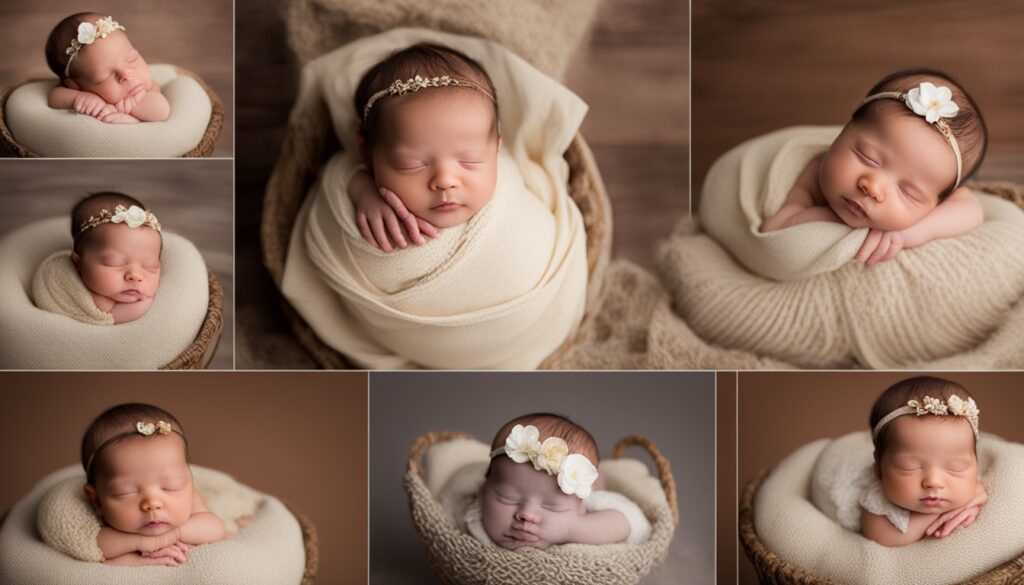
Sigma 24mm f/1.4: Capturing the Environment
On the other hand, the Sigma 24mm f/1.4 is a wide-angle lens that allows photographers to capture the entire environment in lifestyle newborn sessions. This lens has a wider field of view, allowing photographers to include more context and tell a broader story. It is excellent for capturing the nursery, the home, or any other surroundings that play a significant role in the newborn’s life. The Sigma 24mm f/1.4’s wide aperture also enables photographers to shoot in low-light conditions while maintaining image quality and sharpness.
Both the Sigma 50mm f/1.4 and the Sigma 24mm f/1.4 are exceptional lenses for lifestyle newborn sessions, each contributing to the unique storytelling aspect of this style of photography. Whether it’s the intimate moments and details or the broader environment and context, these lenses allow photographers to capture the beauty and authenticity of a newborn’s early days.
Choosing Lenses to Tell a Story in Newborn Photography
Newborn photography is a beautiful way to capture the precious moments of a baby’s first days. It’s a genre that revolves around storytelling, and the lens selection plays a vital role in conveying the narrative. The right lens can help you create depth, focus, and capture the scale of these tiny little miracles.
Using Aperture to Create Depth and Focus
When it comes to storytelling in newborn photography, the aperture setting on your lens is a powerful tool. By adjusting the aperture, you can control the depth of field, selectively focusing on specific elements in the frame. Using a wider aperture (small f-stop number) creates a shallow depth of field, blurring the background and drawing attention to the subject. This technique is particularly useful when you want to highlight the delicate features or expressions of the newborn.
For example, imagine capturing a close-up portrait of a baby’s tiny hands grasping a parent’s finger. By using a wide aperture, you can isolate the hands in sharp focus while blurring the background, creating a sense of intimacy and emphasizing the connection between the baby and the parent.
On the other hand, using a narrower aperture (large f-stop number) increases the depth of field, keeping more of the scene in focus. This can be beneficial when you want to tell a broader story, capturing the newborn in their environment. It allows you to include more details and context, showcasing the surroundings and creating a sense of place.
Depicting Scale and Narratives Through Lens Choice
The lens you choose also helps depict the scale of the newborn in relation to their surroundings, adding an additional layer of storytelling to your photographs. A wide-angle lens, such as a 24mm or 35mm, can capture the entire scene, illustrating the small size of the baby in the larger world. This lens choice can be particularly impactful when photographing newborns in their nursery or capturing family interactions.
Alternatively, a macro lens allows you to get up close and capture intricate details, showcasing the tiny features of the newborn. This lens choice is ideal for photographing little fingers and toes, capturing the texture of soft skin, or highlighting the fine details of newborn props or accessories.
By carefully selecting your lenses, considering the aperture setting, and utilizing different focal lengths, you can create visually compelling newborn photographs that tell a beautiful story. Each lens choice offers a unique perspective, enabling you to capture the emotions, innocence, and wonder of these precious moments.
Combatting Low Light in Newborn Photography
Newborn photography often presents challenges due to low-light conditions. To ensure well-exposed images in dimly lit settings, photographers can employ various techniques and equipment. The advantage of using low aperture lenses cannot be overstated. These lenses have a wide maximum aperture, such as f/1.8 or lower, allowing them to gather more light and produce brighter images even in low-light situations.
Alongside low aperture lenses, stabilization tactics play a vital role in combating low light. Tripods provide stability and minimize camera shake, resulting in sharp and clear photographs. Additionally, increasing the ISO setting on the camera can enhance the camera’s sensitivity to light, enabling photographers to capture well-lit images in low-light conditions. However, it is important to strike a balance with ISO, as higher settings can introduce noise or grain to the images.
By combining the use of low aperture lenses, stabilization techniques, and strategic ISO adjustments, photographers can overcome the challenges of low-light conditions in newborn photography, ensuring that every precious moment is beautifully captured.
The Advantage of Low Aperture Lenses
In low-light situations, the wide maximum aperture of low aperture lenses proves advantageous. With a larger aperture, these lenses allow more light to reach the camera’s sensor, resulting in brighter images even in low-light conditions. The ability to gather more light ensures that newborn photographs are well-exposed and showcase the delicate details and features of the baby.
Low aperture lenses also offer the benefit of shallow depth of field, allowing photographers to create pleasing bokeh and draw attention to the subject by selectively focusing on specific areas. This creates a visually pleasing separation between the subject and the background, further enhancing the overall aesthetic of newborn photography.
Stabilization Tactics with Tripods and High ISO Strategies
When dealing with low-light conditions, stabilizing techniques become crucial to ensure sharp and blur-free images. Tripods provide stability and eliminate camera shake, allowing photographers to use slower shutter speeds without sacrificing image clarity. By using a tripod, photographers can confidently capture newborn moments in low light, ensuring that each photograph is crisp and well-defined.
In addition to stabilization with tripods, adjusting the ISO setting on the camera can aid in combating low-light conditions. Increasing the ISO increases the camera’s sensitivity to light, allowing for faster shutter speeds and brighter images without the need for an external light source. However, it is important to strike a balance when setting the ISO, as higher values can introduce noise to the images. Photographers should experiment with different ISO settings to find the optimal balance between exposure and image quality.
By employing stabilizing techniques such as tripods and strategically adjusting the ISO setting, photographers can overcome the challenges posed by low-light conditions in newborn photography. These tactics ensure that each photograph is not only well-lit but also sharp and free from blurriness.
| Technique | Advantages |
|---|---|
| Low Aperture Lenses | – Gather more light – Create pleasing bokeh – Showcase delicate details |
| Stabilization with Tripods | – Eliminate camera shake – Capture crisp and well-defined images |
| High ISO Strategies | – Increase sensitivity to light – Capture brighter images in low-light conditions |
By utilizing low aperture lenses, stabilization techniques with tripods, and high ISO strategies, photographers can ensure that their newborn photographs are beautifully lit, clear, and sharp. These techniques enable capturing the precious moments of newborns, even in challenging low-light situations, producing images that families will cherish for a lifetime.
Matching the Lens to the Moment
Different moments in newborn photography require specific lenses to capture them effectively. As a photographer, it’s essential to understand which lens is best suited for each unique moment, allowing you to create beautiful and captivating images.
Filling the Frame with Innocence: The Power of 50mm
When it comes to capturing the innocence and delicate features of newborns, the power of a 50mm lens cannot be underestimated. With its ability to fill the frame, this lens allows you to focus on the tiny details, preserving the ethereal beauty of these little miracles. Whether it’s the delicate eyelashes, tiny fingers, or adorable expression, a 50mm lens helps you create intimate and heartwarming portraits that families will cherish for a lifetime.
The Role of Macro and Telephoto Lenses
In newborn photography, capturing intricate details is often of utmost importance. This is where macro lenses shine. These lenses are known for their close-focusing abilities, allowing you to capture the tiny features with incredible clarity and precision. From capturing the delicate texture of a newborn’s skin to highlighting the details of their tiny hands and feet, macro lenses help you bring those intricate elements to life.
On the other hand, telephoto lenses provide a unique perspective in newborn photography. These lenses allow you to capture candid moments from a distance, preserving the natural interactions between the baby and their family. Whether it’s capturing a loving glance between the parents or the excitement in the siblings’ eyes, a telephoto lens allows you to observe and photograph these precious moments without intrusion.
Navigating Your Equipment: Alternative Lenses to Consider
While the lenses mentioned above are popular choices for newborn photography, there are also alternative options worth considering. Each photographer has their own preferences, shooting style, and budget constraints, so exploring different lens options can lead to unique and personalized results. Some alternatives to consider include wider-angle lenses for capturing the surroundings or specialty lenses for creative effects.
When it comes to alternative lenses for newborn photography, wider-angle options can be a great choice for expanding the perspective and capturing the environment. These lenses allow you to include more of the surroundings in your shots, providing a wider view of the scene. This can be particularly useful when photographing newborns in natural settings or including the nursery decor in the frame.
Using a wider-angle lens can create a sense of place and context in your newborn photographs. It adds depth and dimensionality to the images, providing a more comprehensive visual story of the baby’s early days.
Specialty lenses can also offer creative effects that can enhance your newborn photography. Lensbaby, for example, offers a range of lenses that allow for unique blur and distortion effects. These lenses can add a dreamy and artistic touch to your newborn images, adding a layer of creativity and individuality to your portfolio.
| Lens Type | Description |
|---|---|
| Lensbaby Composer Pro II | An innovative lens that allows for selective focus and unique bokeh effects. |
| Sigma 8mm F3.5 EX DG Circular Fisheye Lens | A fish-eye lens that offers a distinct perspective and can create unique distortion effects. |
| Helios 44-2 58mm F2 | A vintage lens known for its distinct swirly bokeh effect, adding a vintage charm to your newborn photographs. |
Specialty lenses can help you differentiate yourself and your work, adding a touch of novelty and artistic flair to your newborn images.
Exploring alternative lenses for newborn photography can open up new creative possibilities and allow you to develop your unique style. Consider wider-angle lenses for capturing the surroundings and creating a sense of place, or experiment with specialty lenses for artistic effects. Whatever lens you choose, remember that the most important thing is capturing the beauty and innocence of newborns in images that families will treasure for a lifetime.
Conclusion
After exploring the world of lenses for newborn photography, it is clear that choosing the best lens requires a careful balance. It’s not just about the technical specifications or the price tag; it’s about understanding the specific needs of newborn photography and finding a lens that can capture the beauty and innocence of these precious moments. Whether you prefer the versatility of zoom lenses or the sharpness of prime lenses, there is a lens out there that can help you create stunning images that families will cherish for a lifetime.
Remember, the best lens for newborn photography is the one that allows you to tell a story, evoke emotions, and capture the unique details that make each newborn special. It’s not about having the most expensive gear or the latest technology; it’s about the passion and dedication you bring to your craft. So, as you embark on your journey of photographing newborns, embrace the process, experiment with different lenses, and let your creativity shine through. Happy shooting!
FAQ
Which lens is best for newborn photography?
The best lens for newborn photography depends on your specific needs and preferences. Some popular options include prime lenses like the nifty fifty lens (RF50mm F1.8 STM) and versatile lenses like the Canon RF 24-70 2.8. It’s important to consider factors such as budget, desired image quality, and shooting style when choosing a lens.
What are the specific requirements for newborn photography?
Newborn photography often takes place in low-light conditions, requires capturing delicate details, and emphasizes the use of shallow depth of field. This means that photographers need gear that can handle low-light situations, provide crisp focus, and offer the versatility to capture both close-up details and wider shots.
Are mirrorless cameras recommended for newborn photography?
Yes, mirrorless cameras are highly recommended for newborn photography. Options such as the Canon R6 Mark II, Canon RP, and Canon R50 offer excellent image quality, precision, and portability. Mirrorless cameras are a popular choice among newborn photographers for their advanced features and superior performance in capturing those precious moments.
What are some must-have lenses for newborn photography?
There are several lens options that are particularly well-suited for newborn photography. Prime lenses, such as the nifty fifty lens (RF50mm F1.8 STM), provide excellent image quality and are often more budget-friendly compared to zoom lenses. Macro lenses are great for capturing intricate details, while wide-angle lenses like the Sigma 24mm f/1.4 are perfect for capturing the whole environment.
How can lens choice enhance storytelling in newborn photography?
Lens choice plays a significant role in storytelling in newborn photography. By manipulating the aperture, photographers can create depth and focus, drawing attention to specific elements of the image. Additionally, lens choice can help depict scale and showcase the small size of the newborn in relation to their surroundings, adding an extra layer of storytelling to the photographs.
What can I do to combat low-light conditions in newborn photography?
To combat low-light conditions in newborn photography, using low aperture lenses with a wide maximum aperture (e.g., f/1.8 or lower) can help gather more light and produce well-exposed images. Additionally, stabilizing techniques such as tripods and high ISO strategies can further aid in capturing sharp and well-lit photographs of newborns in low-light situations.
What are some alternative lens options for newborn photography?
While the lenses mentioned in this article are popular choices for newborn photography, there are also alternative options worth considering. Each photographer has their own preferences, shooting style, and budget constraints, so exploring different lens options can lead to unique and personalized results. Some alternatives to consider include wider-angle lenses for capturing the surroundings or specialty lenses for creative effects.
How do I choose the best lens for newborn photography?
Choosing the best lens for newborn photography is a combination of understanding the specific requirements of the genre, considering gear quality and preferences, and selecting lenses that meet those needs. Whether you opt for zoom lenses or prime lenses, wide-angle lenses or macro lenses, the most important aspect is finding a lens that allows you to capture the beauty, innocence, and emotions of newborns in stunning images that families will cherish for a lifetime.
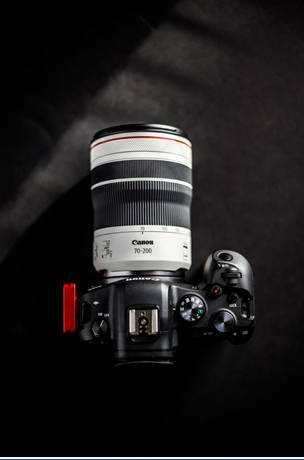
All lenses serve a different purpose, whether for nature photography or taking pictures in an urban setting. Similarly, capturing the essence and details of a newborn can’t be done through any run-of-the-mill camera lens.
Choosing a lens can be difficult for a professional newborn photographer because there’s no single right answer. In all honesty, sometimes, a newborn photoshoot requires several lenses for that perfect capture. Here are a few lenses you can use to capture your child’s first few days.
1. Canon EF 50mm f/1.2L
This is a favorite for people who spend most of their time taking portraits. It provides quick autofocus capabilities so that you never miss out on a moment, as well as good resistance to dust and moisture for longevity.
Furthermore, it sports a high refraction glass that allows you to capture intricate details of your child while not compromising on the best possible image quality, which makes it the go-to for newborn portraits.
2. Canon EF 100mm f/2.8
This lens from Canon provides an unprecedented 1:1 ratio, allowing the photographer to take detailed and intricate close-up shots of the baby without compromising the quality.
Another feature that attracts newborn photographers is its silent autofocus, which lets them take the picture without making any sound that might wake or annoy the baby.
3. Nikon 105mm f/2.8G
Considered to be Nikon’s flagship, this macro lens includes pristine Image Stabilization as well as vibration reduction. This means you can take pictures of your newborn with the clearest quality in the market.
The lens additionally comes with autofocus technology that is nearly silent, so you don’t disturb the baby. All of these features come together to provide stunning results for the parents.
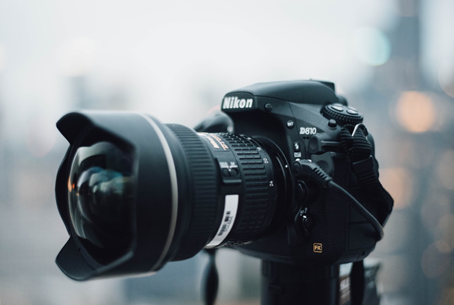
Hire a Professional Newborn Photographer
While professional cameras may have a bit of a learning curve, they provide amazing captures, letting you take quality pictures that your smartphone simply can’t replicate.
If you’re looking for someone to capture your baby’s first few days, Artin Photography brings passion to pictures, providing newborn photography in Vancouver. I hold over 20 years of photography experience and take pride in capturing the most cherished family memories for my clients.
Contact me today to book a session or take a look at my portfolio to learn more about my offerings.

